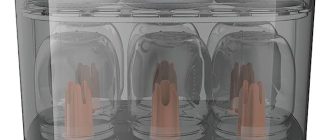Looking for parts?
Enter model number, part number, part type, brand, or part description and press Enter:
Instructions for testing your thermal fuse.

Thermal Fuse
Since you can’t tell if a thermal fuse has blown out simply by looking at it, you’ll need to perform a continuity test. A continuity test will determine if a continuous electrical path is present in the fuse. If the fuse has continuity, it should be functioning properly. No continuity means the electrical path is broken and the fuse has blown out.
Thermal fuses come in many shapes and sizes, but all of them can be tested for continuity in the same way. You can choose from a variety of multi-meters to perform the test. I will give instructions for using both an analog and a digital meter.
When using an analog model, first rotate the range selection dial to the lowest setting for ohms of resistance, then calibrate the meter by pinching the probes together while adjusting the needle to read zero.
When using a digital model, again, rotate the dial to the lowest setting for ohms of resistance or resistance with tone, if your meter has this option. Before you begin, make sure the thermal fuse you’re testing has been removed or isolated from the appliance. Use a probe to touch one of the fuse’s terminals, and a second probe to touch the other terminal.
If the meter reading shows zero ohms of resistance, the fuse has continuity. If the needle does not move, or the digital display does not change significantly, there is no continuity, which means the fuse has blown out and will need to be replaced.
Be aware that the failure of a dryer thermal fuse is often caused by the venting system being clogged with lint. Make sure the venting system is cleaned out after replacing the fuse, and keep it clean as part of your annual dryer maintenance.
Visit for More Dryer Parts, Videos & Information
![]()













